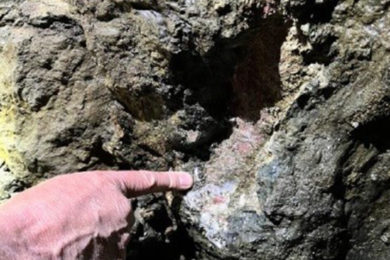Water scarcity and its careful management are a focus of the July issue of the magazine. A number of high profile desalination plants have been built by mines, for example in Chile. One of the main deterrents to this option is the high power cost involved. This may be overcome using a low-temperature distillation method of desalination developed by the New Mexico State University (NMSU) in the USA.
Earlier this year this was licensed to Sterling Water LLC of Qatar. The system uses the natural effects of gravity and atmospheric pressure to create a vacuum in which water can evaporate and condense at lower temperatures than normal for distillation. Its energy requirements are so low that it can be powered by solar energy.
A successful proof-of-concept model was developed last year and the NMSU-led project transferred the science and prototype model from lab bench to a market capable product. Sterling Water intends to bring the commercial model into full manufacturing in the coming year.
The first unit built by the College of Engineering at NMSU produced over 750 litres/d – enough pure water for about 15 people. It is powered by a solar panel. Two 10 m vertical tubes, rising respectively from a tank of saline water and a tank of pure water, are connected by a horizontal tube. The barometric pressure of the water columns creates a vacuum in the headspace.
At ambient temperatures, evaporation from the pure-water side will travel to the saline side and condense as the system seeks equilibrium. Raising the temperature of the water in the headspace over the saline column slightly more than that of the freshwater column causes the flow to go in the other direction, so that pure, distilled water collects on one side and the brine concentrate is left behind in a separate container.
The origins of the technology can be traced to a process, first developed by researchers in Florida, that makes distillation of saline water possible at the relatively low temperatures of 45-50ºC rather than the 60-100ºC required by most distillation processes. Two problems to be addressed in the commercial version are the height of the water columns and brine disposal.
Cheap power is important for so many aspects of today’s mining operations, helping them remain sustainable. Isis Innovation, a company that endeavours to commercialise some of the achievements of Oxford University, England, has a new approach for local generation of hydrogen as a fuel that operates cleanly, at low temperatures, for long periods and at high yield.
Isis notes “there is a great deal of work ongoing on hydrogen storage materials (i.e. those that absorb hydrogen and release it on heating). The key difference of the Oxford approach is to use the earth’s vast resources of silica, with water as the hydrogen storage medium. The initial step involves the green conversion of silica (sand) to silicon nanopowder, which can then release hydrogen on demand, upon the addition of water. Silica, which is regenerated as a by-product, can either be safely disposed or recycled. This technology could be used as an emergency hydrogen source in hydrogen fuel cell vehicles, as well as in lower power fuel cell applications such as communication devices.
“The Oxford technology offers a number of benefits:
■ An innovative approach for local hydrogen supply
■ Low grade silicon can be used as a feedstock
■ Hydrogen generated at low temperatures (70-90°C)
■ High yield of hydrogen (36-58%)
■ Uses non-corrosive and easily disposed-of chemicals.”








